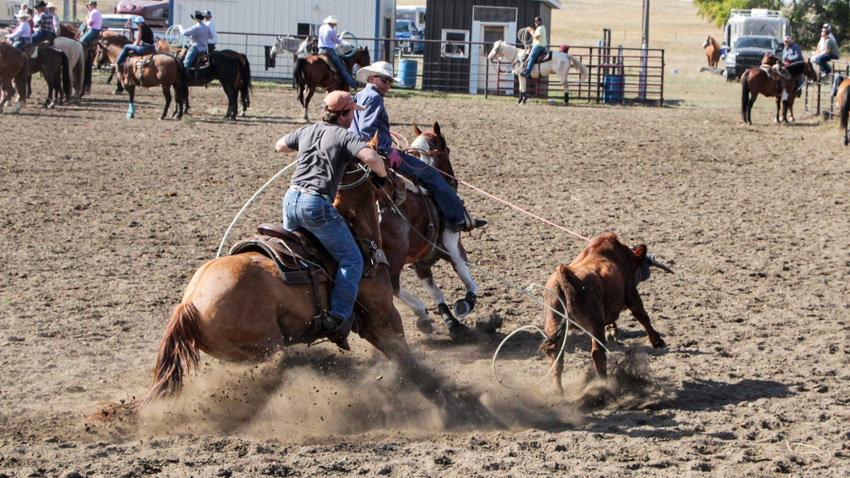
Just as every rider prefers their horse to behave in a certain way, the type of footing used in an arena depends on the owner. Cost and product availability are determining factors in what raw material is used for the arena’s surface.
Factors to consider include the type of equine sport that will occur in the arena, as different disciplines influence the depth, traction and makeup of the footing. Penn State Extension shares top tips to create the best arena footing for you and your equine partner:
1. Layer it correctly. Whether managing an indoor arena at a commercial boarding facility or an outdoor arena in your back pasture, starting off with a solid foundation can increase the longevity of footing. Three layers of footing include a subbase, base and footing. The footing material is dependent upon the support of a suitable and sturdy base and subbase.
The subbase should be a well-compacted, built-up pad of subsoil. Penn State Extension says this layer should have a 1% to 2% slope. The base should be compacted, well-drained, uniform and level, and consist of a well-graded aggregate. This layer should be 4 to 6 inches thick. Finally, the footing should be about 2 to 4 inches thick of loose, well-drained material.
2. Use best materials. A popular component of most footings is a mixture of sand, silt and clay. Add in some organic material from manure and even additives such as coatings, synthetic fibers or rubber. Penn State says footing selection falls into either of two categories: a surface composed of natural soil, which is dragged or tilled to maintain preferred riding conditions, and a surface of materials delivered to meet requirements.
As soil makeup changes from farm to farm, each arena will be filled with even slightly different characteristics. When considering what is best in your arena, take note of the unique characteristics of the local soil to use the most suitable materials.
Evenly graded materials will have a range of particle sizes, allowing animals to maintain proper traction and footing. Fine clay and sand can become slippery in wet conditions as the particles slide over each other, and similarly become dusty in dry conditions as particles easily fly through the air.
Penn State Extension recommends using a finely crushed stone as an ideal base, provided it remains under a quarter inch in size to avoid bruising horse’s hooves. Sand is the most common arena ingredient, but care must be taken to ensure it does not become deeper than 6 inches to avoid strain on the animal’s tendons. Ground rubber can often be mixed with sand to minimize compaction and add cushion into the riding surface. Topsoil, stone dust, stall waste and wood products are also used but may require more work to ensure proper traction and depth.
No matter the footing material, maintenance is vital to longevity of the arena, and the safety of riders and their animals.
3. Keep up on management. Consistent riding can cause wear patterns in the arena that leads to foot material becoming uneven. The footing will become too compacted and lack enough cushion for hooves. A dragging device such as a small tractor with a harrow tine attachment can redistribute the footing. Heavier harrows with a three-point tractor hitch may work better for larger arenas.
Dragging the full arena or simply high-traffic areas should be done at least once a week if light riding occurs. Arenas that are heavily used may need to be dragged once or more each day.
No matter the footing recipe that makes its home in your arena, understand that adaptability and management is key for a safe, comfortable ride every time. Find out more information from Penn State on arena management.
Read more about:
Animal WelfareAbout the Author(s)
You May Also Like






